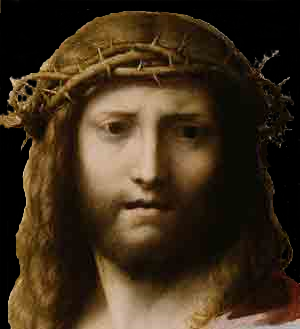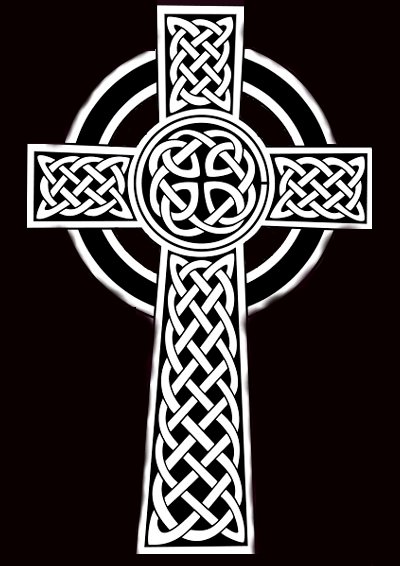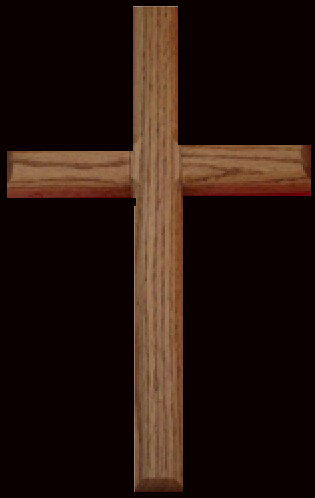
THE AUTONOMOUS GRAND PRIORY OF SCOTLAND
SCOTTISH KNIGHTS TEMPLAR
CHRISTIANITY in SCOTLAND

Christianity in Scotland
The Christian religion is over two thousand years old and within that time it has changed,
people practically all over the world are Christians belonging to many Churches
but all
with the same aim, they follow the man, a young man at the time of his death
because they
believe. They believe that this young man was the saviour and follow his
teachings.
The Crusades were carried out in his name to
retrieve the Holy Land and Jerusalem where
he was born, the Crusader Knights lost thousands of men during these wars
against Islam,
we should not forget these men who like Christ gave up their lives for the cause
in his name.
Early Christianity in Scotland

Celtic Cross
The Culdee's
Scotland was celebrating Christianity long
before the Roman Catholic Church arrived on its
shores, this Christian religion was called Culdee and we look at the early Monks
of that time
having delivered it here, they were
all very hard working men who loved to live off the land
this is why we see so many Celtic Crosses when touring around Scotland in many old graveyards.
In Scotland Culdees were more numerous than in Ireland: thirteen monastic establishments were peopled by them, eight in connection with cathedrals. The Ionan monks had been expelled by the Pictish king Nechtan son of Derile in 717. There is no mention of any Culdees at any Columban monastery, either in Ireland or in Scotland, until long after Columba's time: in 1164 that Culdees are mentioned as being in Iona but in a subordinate position. The Culdee of Loch Leven lived on St Serf's Inch, which had been given them by a Pictish prince, Brude, about 700. In 1093 they surrendered their island to the bishop of St Andrews in return for perpetual food and clothing but Robert, the bishop in 1144, handed over all their vestments, books, and other property, with the island, to the newly founded Canons Regular, in which the Culdees were likely incorporated.
The Culdee chapel in St Andrews in Fife can be seen to the north-east of its ruined cathedral and city wall. It is dedicated to 'St Mary on the Rock' and is cruciform. It is used by the local St Andrews churches for their Easter morning service. In the early days there were several Culdee establishments in Fife, probably small rude structures accommodating 30 or 40 worshippers, and possibly such a structure stood at or near the present church. In 1075 AD the foundation charter of Dunfermline Church was granted by King Malcolm III, and amongst the possessions he bestowed on the church was the Shire of Kirkcaladinit, as Kirkcaldy was then known.Crínán of Dunkeld, the grandfather of Máel Coluim III, was a lay abbot, and tradition says that even the clerical members were married, though unlike the priests of the Eastern Orthodox Church, they lived apart from their wives during their term of sacerdotal service.
The chief houses in Scotland were at St. Andrews, Scone, Dunkeld, Lochleven, Monymusk in Aberdeenshire, Abernethy and Brechin. Each was an independent establishment controlled entirely by its own abbot and apparently divided into two sections, one priestly and the other lay and even married. At St Andrews about the year 1100 there were thirteen Culdees holding office by hereditary tenure and paying more regard to their own prosperity and aggrandizement than to the services of the church or the needs of the populace. At Loch Leven there is no trace of such partial independence.
A controversial reform was inaugurated by Queen Margaret and carried through by her sons Alexander I and David I. Gradually the whole position passed into the hands of Thurgot and his successors in the bishopric. Canons Regular were instituted and some of the Culdees joined the new order. Those who declined were allowed a life-rent of their revenues and lingered on as a separate but ever-dwindling body till the beginning of the 14th century, when, excluded from voting at the election of the bishop, they disappear from history. In the same fashion the Culdee of Monymusk, originally perhaps a colony from St Andrews, became Canons Regular of the Augustinian order early in the 13th century, and those of Abernethy in 1273. At Brechin, famous like Abernethy for its round tower, the Culdee prior and his monks helped to form the chapter of the diocese founded by David I in 1145, though the name persisted for a generation or two.
By the end of the thirteenth century most Scots Culdee houses had disappeared. Some, like Dunkeld and Abernethy, were superseded by regular canons: others, like Brechin and Dunblane, were extinguished with the introduction of cathedral chapters. One at least, Monifieth, passed into the hands of laymen. At St. Andrews they lived on side by side with the regular canons and still clung to their ancient privilege of electing the archbishop. But their claim was disallowed at Rome, and in 1273 they were debarred even from voting. Before the Reformation they had finally disappeared, and in 1616 the lands they once held were annexed to the See of St. Andrews.
Taken from a document dated 7 November 1250
In the parish church of Inverkeithing (FIF), on the morrows of St Leonard, A.D. 1250, in the presence of Robert, lord abbot of Dunfermline, chaplain of the lord pope and chancellor of the lord king of Scotland, and Sir Robert, treasurer of the church of Dunkeld, by apostolic authority between the lord prior and convent of St Andrews on one side, and Master Adam of Makerston, acting as provost of the city of St Andrews, and the Céli De acting as canons, and their vicars on the other. The aforesaid day was made available for the public settlement upheld by the priors of St Oswald and Kirkham for Master Adam of Makerston, Richard Veyrement, William Wischard, Robert de l’Isle, Patrick of Muckhart, Michael Ruffus, Michael Niger, and any other Céli De acting as canons, and other disobedients and rebels of the church of St Mary of St Andrews, and for the enquiries of whether the said Céli De and the vicars had celebrated divine services as bound, and for the statues which the canons shall be under premise. The said abbot and treasurer have published this sentence of the said priors of St Oswald and Kirkham concerning the inquisition made; they have admitted witnesses, and have made this be recorded. They have also made available Saturday, after the feast of St Andrews in the church of the Friars Preachers of Perth for the publication of the attestations, for the calling together of witnesses and testimonies and for proceeding according to the papal mandate. The said judges are permitted to inflict a just penalty upon the said provost and the Céli De on account of their contumacy, and also to postpone up to the said day.

Roman Catholic Crucifix
Jesus died on the Cross
Early Roman Catholic Church in Scotland
Early Church attendees were few and far between in Scotland it was not until the reign of King David I of Scotland that all this changed, he was a devout Catholic and was responsible for the creation of more Churches, Abbey's and Cathedrals throughout Scotland, this legacy he passed on to his descendants who built even more throughout their reigning years.
http://en.wikipedia.org/wiki/Roman_Catholicism_in_Scotland

ProtestantCross
Jesus has risen

John Knox
The Church of Scotland

http://en.wikipedia.org/wiki/Church_of_Scotland
The Presbyterian Religion
The 1560 reformation would see the end of the Roman Catholic
Church's rule in Scotland, this was started by the one time Catholic Priest John
Knox, however, Roman Catholics were still allowed to practice their faith but
had to pay the new Church a tax to be allowed to do so.
Most Churches and Abbey's in Scotland were taken over by the new religion and
never really destroyed, there seemed to be a slight harmony between both the
faiths, John Knox rented a room from a Roman Catholic called James Mossman in
the Edinburgh High Street, this house is today portrayed as John Knox's house
when it was not.
http://en.wikipedia.org/wiki/John_Knox
http://en.wikipedia.org/wiki/Church_of_Scotland
The Covenanters

In 1637, Scotland was in a state of turmoil.
King Charles I and
William Laud,
Archbishop of Canterbury, met with a reverse in
their efforts to impose a new liturgy on the Scots. The new liturgy had been
devised by a panel of Scottish bishops, including
Archbishop Spottiswoode of St. Andrews, but a
riot against its use was orchestrated in
St. Giles' Cathedral, Edinburgh, ostensibly
started by
Jenny Geddes. Fearing further measures on the
part of the King, it occurred to
Archibald Johnston (Lord Warriston) to revive
the National Covenant of 1581. Together with the cooperation of
Alexander Henderson, a revitalized National
Covenant was finalized in early 1638. throughout the years the Covenanters were
persecuted because of their beliefs and many were executed or murdered, however,
they were instrumental in the destruction of beautiful old Churches, Abbey's and
Cathedrals raising many to the ground.
https://en.wikipedia.org/wiki/Covenanter
All materials and photographs are the property of other
owners and
© The Autonomous Grand Priory of Scotland -
2006-2014